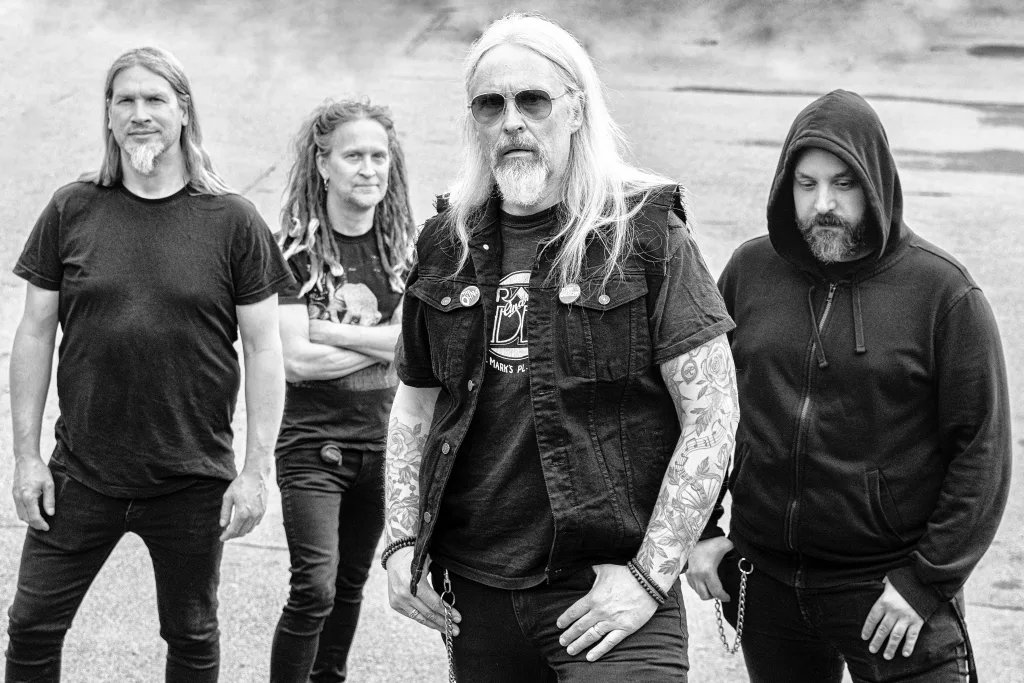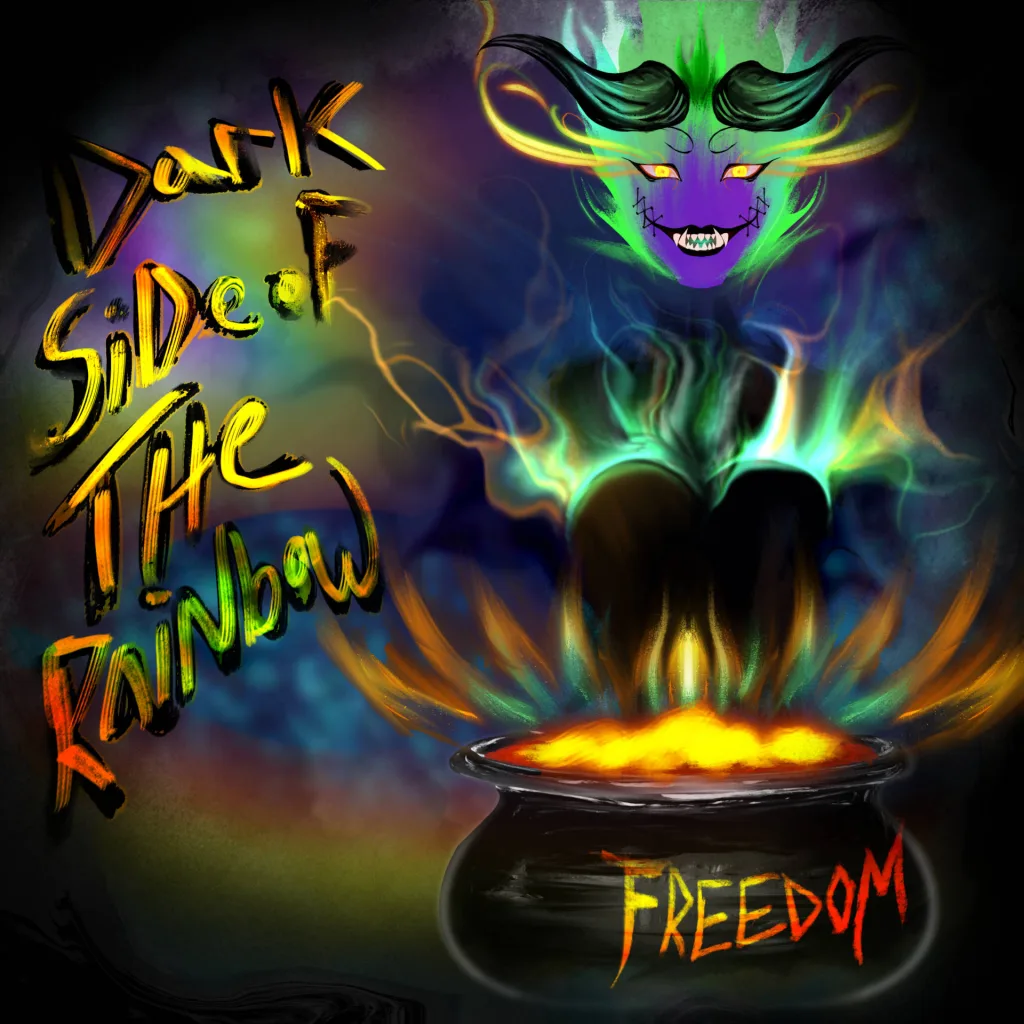“You’re gonna walk in and you’re gonna get beat in the head with the music. That’s what you get from Slayer, you get a kick in the head.”
Tom Araya.
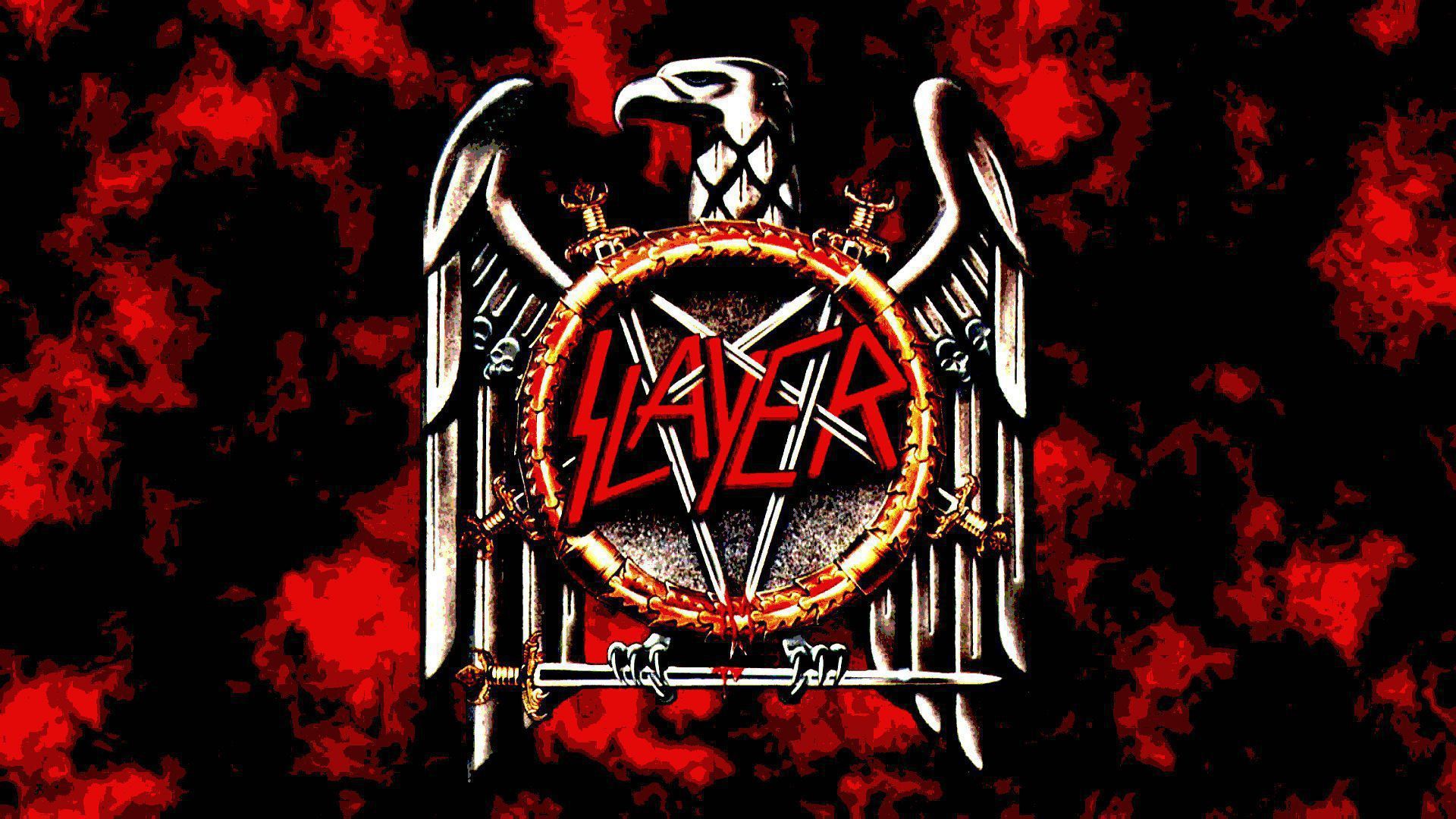
Slayer is a band that has managed to create a legacy that transcends music and their own particular achievements, becoming for all purposes the definitive extreme Metal band of the genre. There’s not a single extreme Metal band out there whose sound or imagery wasn’t influenced by Slayer and they will continue that way for a very long time.
Slayer finally decided to retire in 2019 after almost four decades of making music and touring all over the world, offering some of the most brutal and intense live performances ever witnessed and albums that have become all-time classics of the genre. Whether it’s Show No Mercy, South of Heaven, Hell Awaits or the memorable Reign in Blood, Slayer has built a career that millions of bands can only dream of.
Kerry King, Tom Araya, Dave Lombardo and the late Jeff Hanneman founded one of the most important bands in the history of the genre and they have created a legacy that can’t be undermined. And here I want to talk about the career, achievements and history of Slayer throughout the years to celebrate a band that bid their farewells in 2019.
The beginnings.
The beginnings of Slayer are actually a bit uncommon compared to many of their contemporaries that started off with multiple different members and constantly changed their lineups before even releasing their debut albums. In the case of Slayer, they were founded in 1981 by guitarist Kerry King (who also had a short stint with Megadeth in 1984, but that didn’t amount to anything due to time schedules), Chilean-American bassist and vocalist Tom Araya, guitarist Jeff Hanneman and Cuban drummer Dave Lombardo.
The band was formed in California, which wasn’t the most welcoming scene for them at the time because 80s Glam Metal bands such as Ratt and Mötley Crüe were starting to make a name for themselves and that was the sound and the aesthetics (lots of feminine makeup and big hair) that were dominating the scene in LA at the time. Slayer, on the other hand, was a band that was heavily influenced by the likes of Black Sabbath and several groups of the New Wave of British Heavy Metal that was all the rage back in the early 80s, such as Iron Maiden, Venom or Diamond Head.
They also used makeup back in their early days like the Glam bands, but theirs was pitch black and white, similar to what Black Metal bands would use a decade later. They also wore a lot of leather, inspired by one of Kerry King’s favorite band, Judas Priest. Mercyful Fate also inspired the band’s satanic imagery and lyrics, thus making early Slayer an interesting combination of 80s Heavy Metal, Speed Metal and what would go on to be named Thrash Metal.
It’s interesting to point out that Metallica’s 1983’s debut album, Kill ‘em All, is often cited by many as the genesis of the Thrash Metal subgenre, but there already bands like Exodus, Overkill and Slayer offering a similar music style and the latter got their big break five months before Metallica’s debut was released when Brian Slagel, owner of the label Metallica released their album with, Metal Blade Records, when to a Slayer show and was blown away by the sheer intensity of their performances. They got the chance to record an a track for the upcoming Metal Massacre III compilation, Aggressive Perfector. Slagel loved the song and he decided to offer them a record deal, which resulted in the release of their 1983 debut album, Show No Mercy.
The recording album was not simple because the band didn’t have a lot of money and most of the investment came from a loan from King’s father and the fact that Tom Araya was working as a respiratory therapist, with the band recording from midnight to 6 am in the studio in order to save expenses. And after the contribution to Metal Massacre III, they discovered that Aggressive Perfector, with its sheer intensity, was the right direction for the band.
“We went back to the studio and trashed a load of the songs that we had done up until that point and started changing up our stuff,” Tom Araya stated about the rewriting process of the songs they had ready for the studio recording. “We started rewriting songs and that was how we came up with the songs that ended up on Show No Mercy.”
It’s interesting to look back on Aggressive Perfector as the seed for the sound we find in Show No Mercy because you can find that notorious influence of Iron Maiden, Judas Priest, Mercyful Fate and Venom all combined in a very youthful feel to it. This debut album doesn’t really sound like anything that came in 1983 and at the same time sounds like a lot of different bands, as weird as that may sound.
Songs like Die by the Sword, Crionics or Tormentor are a rarity in Slayer’s catalogue given that they possess a certain rhythm and melody that sets them apart from the brutality that we can often find in the rest of their songs; we can also see a lot of the Iron Maiden influence in the way these songs are structured in terms of melody and a lot of Priest in the way Araya sings, aiming for a lot of high notes, especially with Crionics and Tormentor.
The album did relatively well for an independent release and it managed to create an underground fanbase, much like many other Thrash bands at the time, but Slayer didn’t rest in their laurels and in 1984 they released an EP, Haunting the Chapel, which showed the band going through the direction Slayer would be much more known for and it was clear that tracks like Captor of Sin or the now classic Chemical Warfare were the band’s statement on the then-current music scene’s lack of brutality. “For us it was about the fact that punk had disappeared and metal had lost its connection with the street,” Kerry King said in 2001 about their early releases.
This was also the period where drummer Dave Lombardo started to come to his own and grow to be the brilliant player he would went on to be. “Ummm, probably by Haunting the Chapel, which was our second release. Because the first album was done without double bass, then the second one, Haunting the Chapel, which was the EP, that one we recorded with double bass,” Lombardo said in 2011 when asked about the time double-bass playing entered his skillset. “There was Captor of Sin and Haunting the Chapel. Those were the two songs, so what, it goes back to ’84? Playing at that speed back in 1984, with no computers – on tape – is the beauty of it.”
Consolidating their sound.
I think Haunting the Chapel and the subsequent 1984 and 1985 tours with Venom and Exodus are a very important time period to understand Slayer’s progression to the brutal Thrash Metal machine that we know these days. It was during this time period that the band released a live album called Live Undead in 1984, which now has the controversy that it was recorded in a studio, but that has been an endless debate that we’re not going to dwell in here.
A stronger band came out from that 1983-85 time period, with Brian Slagel firmly betting on them and placed a $5000 budget for the recording of their second album, and while that wasn’t a lot in comparison to other bands at the time, it was a massive improvement for the guys of Slayer. “Back then I didn’t know what the budget was or anything, now I do,” Tom Araya said in 2010 about the budget of their second album, Hell Awaits. “Back then Brian (Slagel) was doing it – he’s going to pay for it, and my only thought was that he was going to get his money back. However that works out, I knew he was going to get it back, and he’s got his money back ten times.”
Hell Awaits is one of the most fascinating albums in Slayer’s catalogue because this is the time period where the music became much more extreme and at the same time more technical, having more experimental time signatures than the vast majority of their output. It was also the time where some of these became classics for the band and the first time where they a certain degree of success on a bigger scale, with the title track becoming a live staple and also one of the anthems of extreme Metal in general.
A personal favorite of mine has to be the Araya-penned At Dawn They Sleep, a track about vampires that shows that Slayer are much more than just extreme music, combining complex guitar leads with the rhythm of Show No Mercy. It was also the first time that Araya was credited as a songwriter, and he shed some interesting light into the matter:
“I had an idea called At Dawn They Sleep, which was a song I co-wrote. That was like my first co-writing credit. I did do some stuff on Show No Mercy but didn’t get credit,” Araya stated in 2010. “There’s a lot of stuff…, even up until now, there’s a lot of stuff that I don’t get credit for. That was my first part of really trying to be part of a song.”
Not getting credited or not, Hell Awaits was a brilliant mission statement that showed the world what Slayer was all about and cemented them even more in the darkest depths of the extreme Metal genre, becoming one of the leading bands of the Thrash Metal wave and also establishing themselves as part of the famous Big Four, besides the likes of Metallica, Megadeth and Anthrax.
It’s interesting to look back on those days because extreme Metal bands don’t get the possibilities that Slayer had during the 80s and it’s a testament to the band’s quality and enduring albums. “You’d have thought Slayer would have been a tough sell,” says Brian Slagel stated in 2016. “But these were the days when all the majors were getting involved with metal and all the labels were over them, trying to work something out. The band had so much momentum – they were the biggest band who weren’t involved with a major at the time.”
This last certainly proved to not last long when producer Rick Rubin, a then 22-years old owner of a hip-hop label called Def American Records, got a deal with CBS Records and was blown away by Slayer’s live performances (which is something of a patter throughout the band’s career), so he decided to give them their first major label contract and a chance to record an album with a bigger budget and much better resources.
All of this would lead to what is now widely regarded and considered as Slayer’s crowning achievement and the moment where they entered Metal history: Reign in Blood.
Reign in Blood.
It’s impossible to understand what Slayer represents and has achieved throughout the years without taking 1986’s Reign in Blood album into consideration: it’s viewed as the band’s ultimate work and the moment where they reached their most extreme version, to the point that the album shows Slayer’s Punk roots by just being 28 minutes long yet expanding through ten different songs.
The writing process was swift and to the point, much like the album’s music; now they were four seasoned musicians and they had developed their music chops, to the point that Hanneman and King, usually the leading creative forces behind the band, decided to shorten the songs and go for a much more direct style. “…one thing about me and Kerry is that we get bored of riffs really quick. We can’t drag the same thing over and over or do the same verses six times in a song,” the late Hanneman said to Decibel Magazine back in 2008. “When we finished Reign in Blood, we had this meeting with Rubin, and he was like, ‘Do you realize how short this is?’ And we’re going, ‘Oh, fuck…’ And then we all collectively looked at each other and said, ‘So what?’”
Ironically enough, the song that would go on to become the band’s most famous song and an all-time classic, Raining Blood, was actually one of the easiest songs to record. “I just remember when I came up with it, I thought, ‘This is pretty good’. I instantly grabbed my little mini-recorder or whatever I had at that time and recorded it so I wouldn’t forget it,” Hanneman said in 2011. “I had no idea that the fans would react to it as much as they do. Still, to this day, when we play that song, they go nuts. It’s just unbelievable.”
Reign in Blood is the definitive Slayer album and it’s very likely the album you’re most familiar with, even if you don’t know much about the band. It was also a considerable commercial success and a groundbreaking piece of musicianship that set the standard for extreme Metal albums to come.
It’s interesting to think of the late Jeff Hanneman during this time period of the mid-to-late 80s because this is, in my view, a part of the band’s history where his musical input made a major difference to their sound and the direction they were heading, especially considering his Punk Rock sensitivities. “He was going into these specialty shops where they played nothing but underground music,” Tom Araya said in Metal Hammer #231. “He’d show up with these punk discs. Then Dave got into it, and so did I, because it was different. The last one on the wagon was Kerry – he was a metalhead, he didn’t understand it at first. But eventually he started to like it.”
Whether it’s the apocalyptic Rainning Blood, the sheer sadism of Angel of Death, the cataclysmic Postmortem or the phenomenal Altar of Sacrifice, there is a lot to choose from this album and at 28 minutes is strangely accessible; this is one of those odds cases where I would actually recommend this album as an entry point to extreme Metal. It’s that good and that easy to listen to.
“There wasn’t anything hard about it,” Araya said. “The only thing was that we told Dave to speed it up: ‘C’mon, let’s pick it up a bit!”
South of Heaven.
To support what quickly became their most important album until that point, the band went on a world tour where they played alongside the likes of Overkill, Metal Church, D.R.I., Dark Angel, Flotsam and Jetsam, Malice and Agnostic Front, but when they were supporting W.A.S.P. during their tour on the United States, they had to deal with the news of drummer Dave Lombardo leaving the band, which is something that would become somewhat of a constant through Slayer’s history.
“I wasn’t making any money,” Lombardo said many years later. “I figured if we were gonna be doing this professionally, on a major label, I wanted my rent and utilities paid.” Whiplash drummer Tony Scaglione took drumming duties for the rest of the tour.
Eventually, after a couple of months of discussion (and with Lombardo’s wife playing a key role), Lombardo came back to the band and they decided to prepare their upcoming fourth album with a clear notion in mind: changing their style.
“We had done Reign in Blood, and we said, ‘Let’s give them something they won’t expect’,” King stated. “And it was also to make the live sets more interesting, because to go up there and just play fast, it’s a barrage that people can’t take. We wanted to mix it up and make our show more of a rollercoaster ride.”
So was born 1988’s South of Heaven: an album where the band intentionally decided to play at a slower pace compared to the frantic speed of Reign in Blood, showcasing the musicianship that the band developed through the decade. And while King has stated that he is not a fan of the album and that it was a lackluster performance from his part, South of Heaven has grown among the fandom throughout the years and these days is one of the most highly-regarded Slayer albums, with songs like the title track and Mandatory Suicide becoming all-time classics in the band’s catalogue.
I would have to say that this is one of my favorite vocal performances from Tom Araya, and that’s interesting because he contributed a lot to the songs–much more than what he did on previous albums. “Jeff and Kerry already had plenty of material when we recorded [Reign in Blood], so I didn’t have to worry about the lyrics,” Araya told Metal Hammer in 1988. “I wrote some of the lyrics this time because we only had the music on its own. Kerry normally writes the lyrics, but he hadn’t really got anything together recently, whereas I had quite a few ideas stored away. Kerry wasn’t too keen at first, but Jeff liked my lyrics so we used them in the end.”
As I said before, the album took some time to be appreciated by the fans, but I personally think it’s a testament to Slayer’s creative output at the time; many years later they would develop an automatic pilot of sorts when making new music (at least from my perspective) and albums like South of Heaven are a proof of how they can alter their sound while sounding like Slayer. It was also the band’s most commercially successful work until that point and a breaking for them, preparing them for even further heights.
Seasons in the Abyss and the Bostaph years.
The early 90s are the summit of commercial success for Thrash Metal, with the whole Big Four enjoying a tremendous period of popularity and that culminated with the Clash of the Titans tour, where Slayer, Anthrax and Megadeth, supported by then-upstarts in the Rock scene, Alice in Chains, got together and offered a series of shows that are remembered to this day. It’s only fitting that Slayer released one of their strongest albums (and to some, their last great work) in the form of 1990’s Seasons in the Abyss.
The fifth Slayer album is what I consider the right release at the right time; Seasons in the Abyss was a culmination of everything the band had learned until that point and they found a great balance between musicianship, brutality and even a tinge of melody, resulting in an album that has managed to withstand the test of time and now being considered a classic of the Thrash Metal genre.
And even beyond the fantastic music, the music video for the title track had a lasting impression on the mainstream audience and it’s one of the finest Metal videos of the 90s, with the band actually recording it in Cairo, Egypt, with Tom Araya and Dave Lombardo taking a shine of the place and they decided to visit it next year with the band’s manager. But it took longer to grown on Kerry King.
“We were all toured out after Japan,” King said a few years ago. “We wanted to go home. It was just a big pain in the ass. I remember we got there in the evening and it wasn’t a sandstorm, but you couldn’t see very far. We checked into a hotel, woke up the next morning and it was so clear. It felt like you could touch the pyramids from my window. We all just went, ‘This is really cool,’ and got into it.”
Of course, this time period in the band’s history is widely remembered for being the era where Dave Lombardo left Slayer in a much more determined manner and went on to have multiple projects, with Grip Inc. being one of the most known. But I think Seasons in the Abyss is not only that, but also the last outburst of genuine creativity that the band and the last time they truly worked as a cohesive musical unit, which is something that some members seem to agree with.
“To me, Seasons was the last time we all sat down and worked on a record together as opposed to coming in with songs already done,” Tom Araya said in 2008. “It was the last album where I really felt like I was part of the songwriting process rather than being handed songs that were already complete.”
With Lombardo it was something that happened to a lot of musicians in the Thrash Metal subgenre: the constant and incessant touring took a huge toll on him and he felt that he had given so much. “I remember watching Anthrax play on that tour and thinking I’d have to work really hard to keep up with [drummer] Charlie Benante,” Dave Lombardo also said in 2008. “I was exhausted by that time, though, you know? I was absolutely burned out. It was album after album, tour after tour — it was never-ending. I was done.”
Araya and King had different opinions on why he left, with the former stating that Lombardo didn’t spend a lot of time with them while the latter saying that his drumming wasn’t up to par during those days, although that plays in line with Lombardo’s statements on being burnt out.
Regardless, all parties involved decided that moving on was for the best and Slayer hired the services of the underrated Paul Bostaph, who was the drummer of an also underrated Thrash Metal, Forbidden, and another classic band from that subgenre, Testament. He was a Slayer fan and he practiced extremely hard to get every song right, with only having one error in the audition when playing Angel of Death. This cleared the band’s doubts about him–especially King’s, given that he thought that Forbidden had a more melodic approach to the sheer intensity of Lombardo’s playing style.
“I respected and loved Dave’s drumming but as a fan, if they got a new drummer and I bought a ticket to a show, I would expect to hear the stuff that Dave does, that’s what I would want,” Bostaph stated. “So, I went in and every time I had to learn a new song I would play them exactly how Dave played them”
Sadly for Bostaph, he got into the band at a time where Metal was losing commercial value to mainstream audiences due to the rise of the Grunge movement and when Slayer entered into a routine of sorts, much more comfortable with the sound that they have developed and with a clear focus on what they wanted to do from now on.
That was basically the spirit of their 1994 release, Divine Intervention, with the band staying true to the sound and style that made them great. And while I think that Bostaph’s drumming is some of the best that he has done throughout his vast career (in fact, I think his drumming through his whole Slayer career has been extremely solid), this work, beyond a few moments of genius like the title track, starts to show the chins in Slayer’s armor and this is where we start getting the band in a routine of sorts, always striving to make the same type of album.
Ironically enough, despite the band staying true to their musical roots in the vast majority of the 90s, they added a bit of Nu Metal influence to their 1998 release, Diabolus in Musica, with Jeff Hanneman being the creative force behind what is considered to this day the most controversial Slayer album of all time. It’s truly a divisive work and the only time where Slayer truly gave in to the different musical trends of the time–it’s no wonder that Kerry King was so adamant that they were not going to change when he was promoting their next album, God Hate Us All, in 2001.
“’Progressing’ normally means doing things you’re not good at – we’re not gonna suddenly do an album of ballads just to progress, we know that what we’re best at and what we love is incredibly aggressive, fast, heavy music,” King said in 2001. “God Hates Us All is a snapshot of us at this point in time. Every album has been just that, a snapshot.”
Partly, I can’t blame King for thinking that way even if I don’t fully agree with the direction that the band took after Seasons in the Abyss; the band tried something different in the late 90s and didn’t pan out, with God Hates Us All giving us a very extreme version of Slayer, almost as if they were rejecting what they did in Diabolus in Musica and show a much more straightforward delivery of their music. This is also the time period where Araya fully established a more shouting approach to his singing–something that would be the constant until his retirement.
Lombardo’s comeback, tragedy and the end.
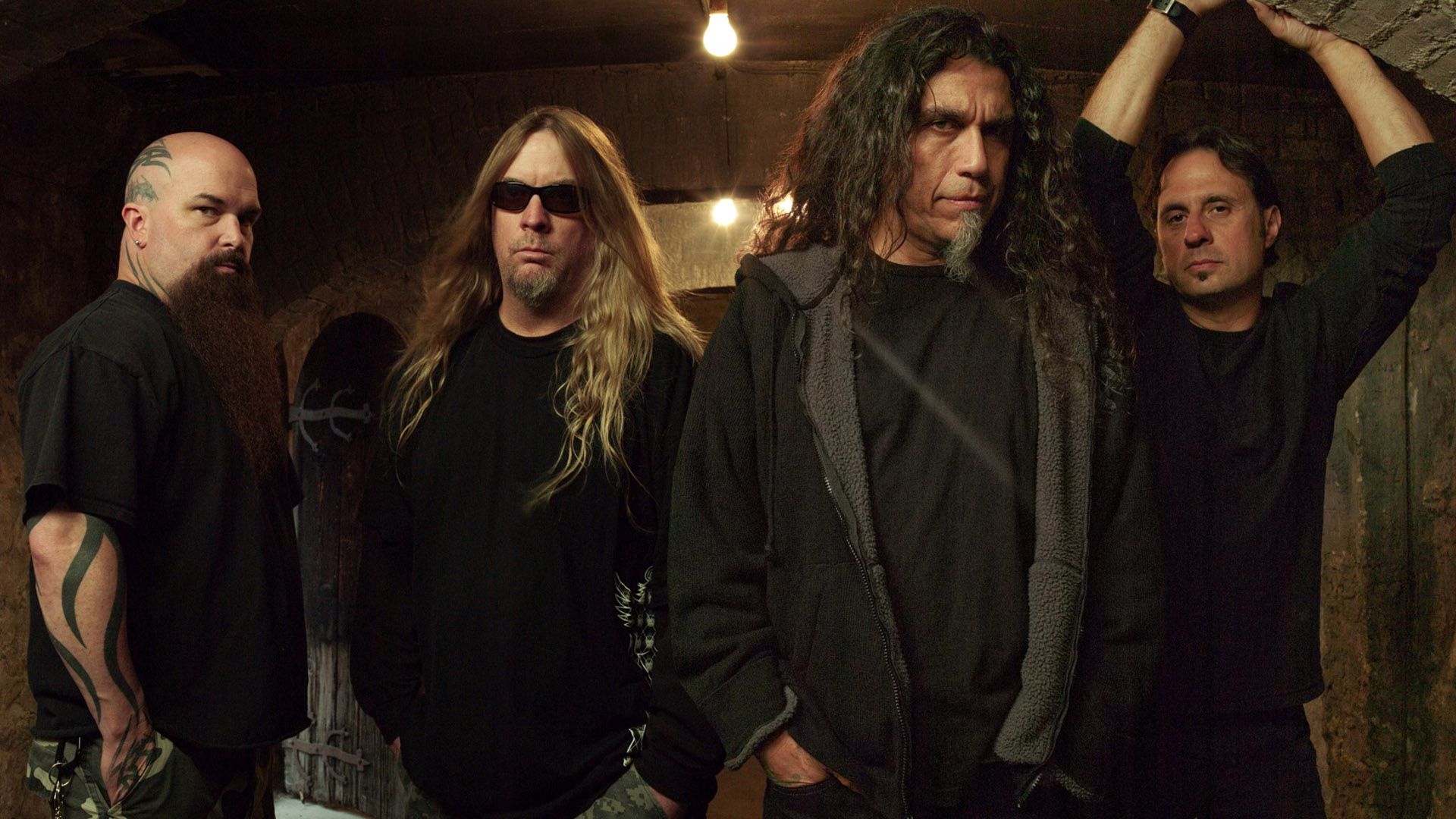
Paul Bostaph suffered an elbow injury during the God Hates Us All tour and Slayer considered contacting former drummer Dave Lombardo now that things were much better between him and the other guys in the band, with the former accepting and finishing the tour, while doing another tour called “Still Reigning”, where they played Reign in Blood in its entirety.
They wouldn’t release an album until 2006’s Christ Illusion, which to me was an average album compared to what the band had done until that point and one of those examples that I mention of the band being in automatic pilot, but they quickly delivered a stronger album in 2009 with World Painted Blood, collaborating with Rick Rubin once again.
I would say that World Painted Blood was the closest album that Slayer made that could recapture the band’s classic essence. Interestingly enough, EMI India withdrew the album from their country because it was considered “too blasphemous”.
“I take it as a good thing. I actually do,” Jeff Hanneman stated during the album’s promotional tour. “When I heard about it, I just thought, ‘I’m the winner!’”
This was also the time where Slayer gathered with the rest of the Big Four of Thrash Metal, Metallica, Anthrax and Megadeth, and did a whole tour together, reaching several places, mostly in Europe, and they would repeat that a couple of times afterwards. Sadly, in 2011, Jeff Hanneman would suffer a major setback by being diagnosed with necrotizing fasciitis due to being bite by a venomous spider, and guitarist and leader of Exodus and friend of the band, Gary Holt, took his place for the rest of that tour.
The next two years would be focused on Hanneman’s recovery and the band shut down any talks about making a new album without his input, but Dave Lombardo would actually be fired in early 2013, with the band claiming that he got together with them a week prior to the beginning of the tour and that he demanded a new of conditions to work with them, although Lombardo has claimed that things happened in a totally different manner. Jon Dette took his place in a temporary manner and Paul Bostaph came back once again as a permanent replacement.
Regardless, the real news that would hit the band harder than ever before came in May 2, 2013, when it was confirmed that Jeff Hanneman died due to a liver failure in a local hospital in Inland Empire, California, where he lived. It was a massive tragedy within the Metal community and for the first time in three decades there was talk about the band not continuing after the death of Hanneman.
Despite Gary Holt being an extremely talented guitar player and a fantastic choice to replace Hanneman, I can’t help but think that 2015’s Repentless, Slayer’s last studio album and the one where they used the last material Hanneman wrote, is a sad and unfitting ending to the band’s legacy, mostly because I think it shouldn’t even exist. I don’t have anything against Holt and Bostaph (in fact, I love many of the albums they have made throughout the years), but a Slayer album without both Lombardo and Hanneman feels incomplete and strange, as if the band is lacking its heart and its legs. That’s how I see this album, and while it’s far from being an objective view of a musical effort that doesn’t have any fundamentally wrong with it, it’s the best I got, if I’m completely honest with you.
The band carried on, as they have always done since their inception, and paying tribute to Hanneman’s career and life, as he duly deserved. Holt and Bostaph did great, doing these songs justice and Slayer finally decided to put an end to their vast and glorious history last year, mostly due to Tom Araya’s health issues with his back after years of headbanging and the fact that he didn’t felt motivated enough to carry on touring. I can’t honestly say I blame him at this point of his life and career.
Slayer is a band that has defined extreme Metal and has played the game with much more consistency than a lot of bands in the business in the last three decades. And while I’m not the biggest fan of the somewhat simplistic direction they took since the mid-90s, I can certainly respect the consistency and intensity of their live performances, always striving to surprise the audiences and give them the brutality that they expect of a band of Slayer’s legacy.
All I can say is that this is a band that lived and died by their sword. Through their own terms. And I think that’s what Hanneman, King, Araya and Lombardo always wanted when they founded this band in 1981.
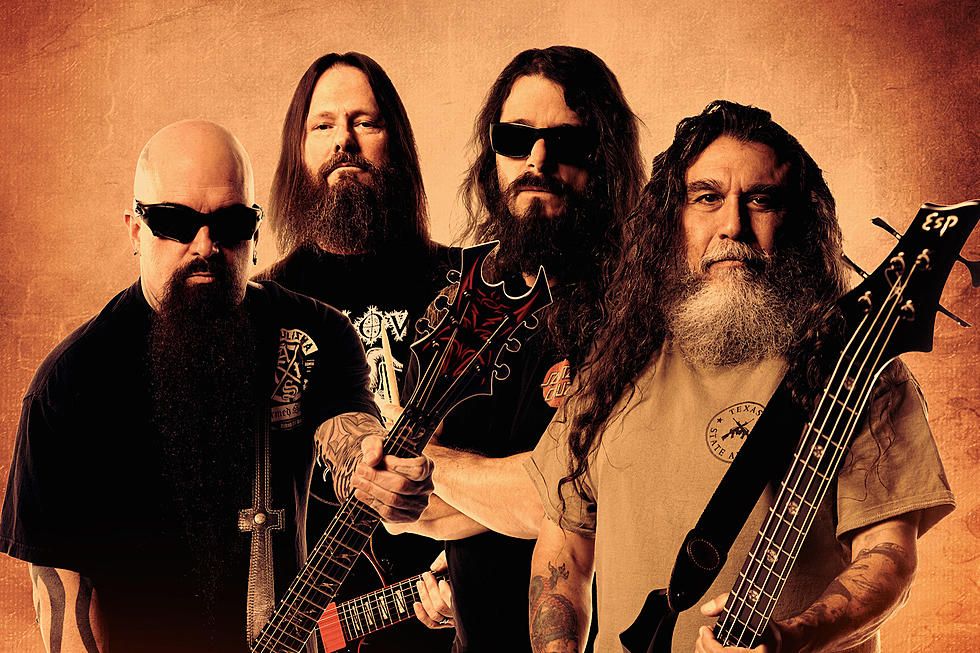
Author
Kevin Tanza
You may also like
Continue reading


